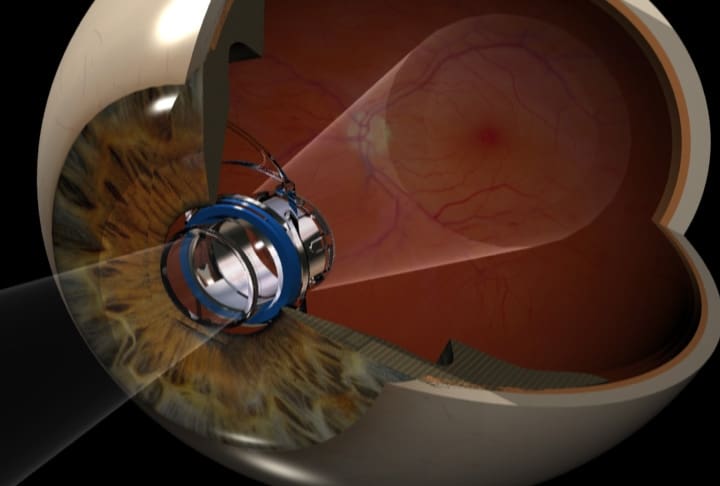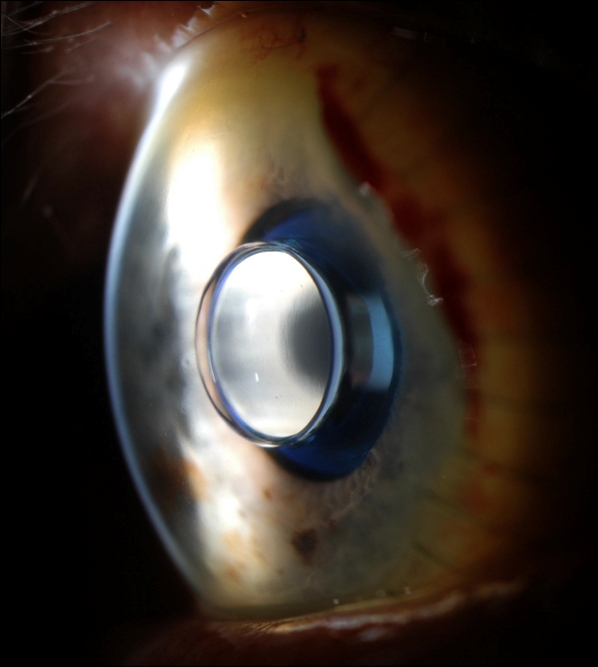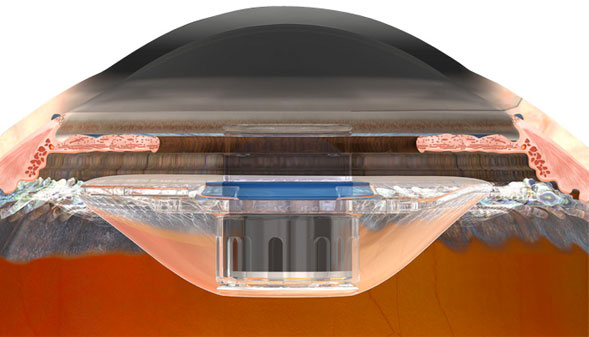Bionic Telescope Eye Implant for Macular Degeneration

Everyone knows that as we age our vision weakens and can lead to blindness in some cases. The leading cause of vision loss for people over 60 is age related macular degeneration (AMD). For people to suddenly not be able to see after a long life can be a huge lifestyle change that can lead to depression and diminished quality of life. Therapy, support groups, and training can help people adjust, but reality is either they don’t seek these services or the services aren’t available nearby. To help combat the effects of AMD, VisionCare of Saratoga, California has created an implantable telescope called The Implantable Miniature Telescope (IMT).

AMD Crash Course
With AMD the back of the eye deteriorates which leads to blurred vision and central blind spot. Here is how a UC Davis article describes AMD:
AMD affects the macula, the part of our retina that provides
central vision. As macular degeneration progresses, it can
lead to a decline in the ability to see fine detail and a loss
of central vision in one or both eyes. For patients with
advanced macular degeneration, this loss of central vision
can have a significant impact on their ability to perform their
daily activities, and, unfortunately, can lead to depression,
increased accidents, and a diminished quality of life.
More Coverage
The IMT is surgically implanted into the eye and basically magnifies images coming into the eye. This causes a larger image to be projected onto the back of the eye. Allowing healthier parts of the eye to take in the image and send it to the brain. The video below shows how this is all done.
Implementation
Recently the UC Davis Medical Center successfully implanted IMT into 89 year old Virginia Bane. The last few years Bane was not able to read print or paint despite being an artist. Now she her vision has improved dramatically and doctors think that her vision will continue to improve as her brain and eye adjust to the new technology. For more on here story read this UC Davis article.

Conclusion
I know some out there are still a little squeamish about combining technology to our bodies. Well get used to it because that is only going to increase. As of now the technology seems to be helping people and improving lives which is a good thing. We’ll worry about the bionic humanoid army uprising another day. But for more on IMT visit these links here and here (PDF). Also if you’re interested in potentially being an IMT recipient here is some info from the UC Davis article:
Candidates for the procedure include individuals with untreatable end-stage, age-related macular degeneration (dry form) who are 75 or older and whose disease is stable but severely impairs vision. Candidates must have adequate peripheral vision in the eye that will not receive the implant and have no other ocular diseases, such as glaucoma.
Patients and physicians can find more information about the telescope implant and treatment program at UC Davis Health System Eye Center (www.ucdmc.ucdavis.edu/eyecenter / 916-734-6074), the Society for the Blind (frontdesk@societyfortheblind.org 916- 452-8271) or CentraSight (www.CentraSight.com 1-877-99SIGHT).
